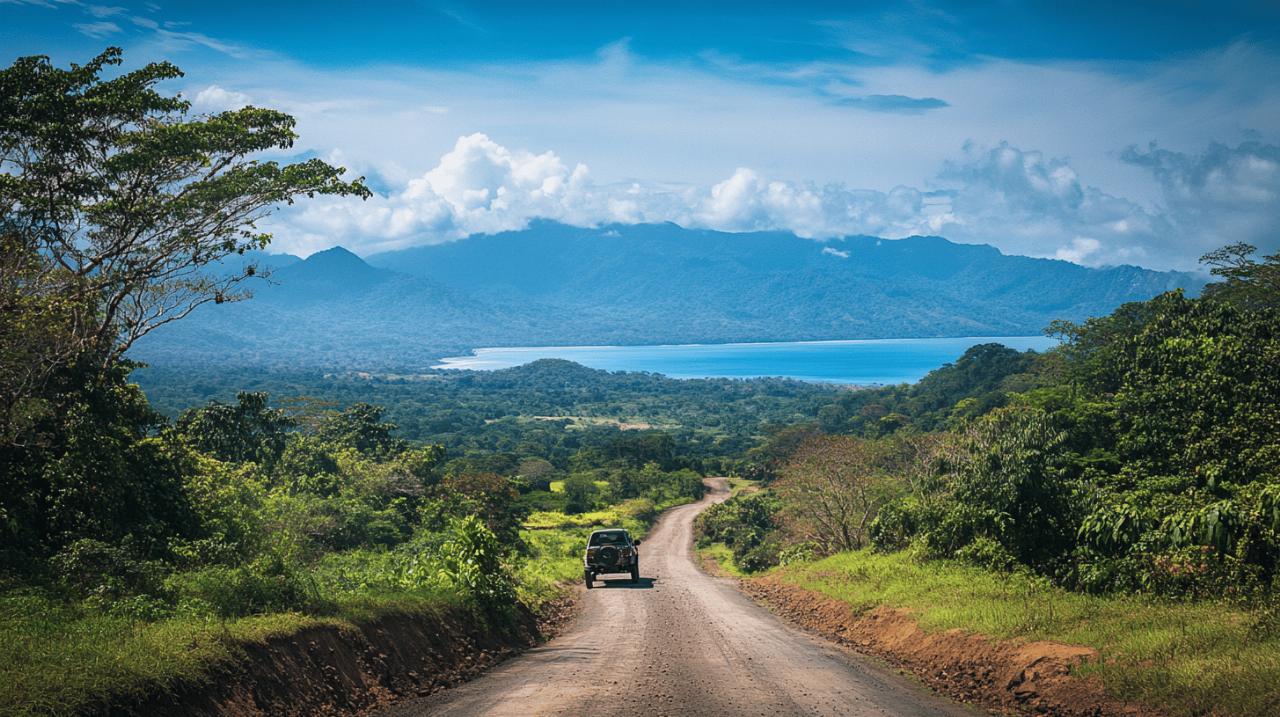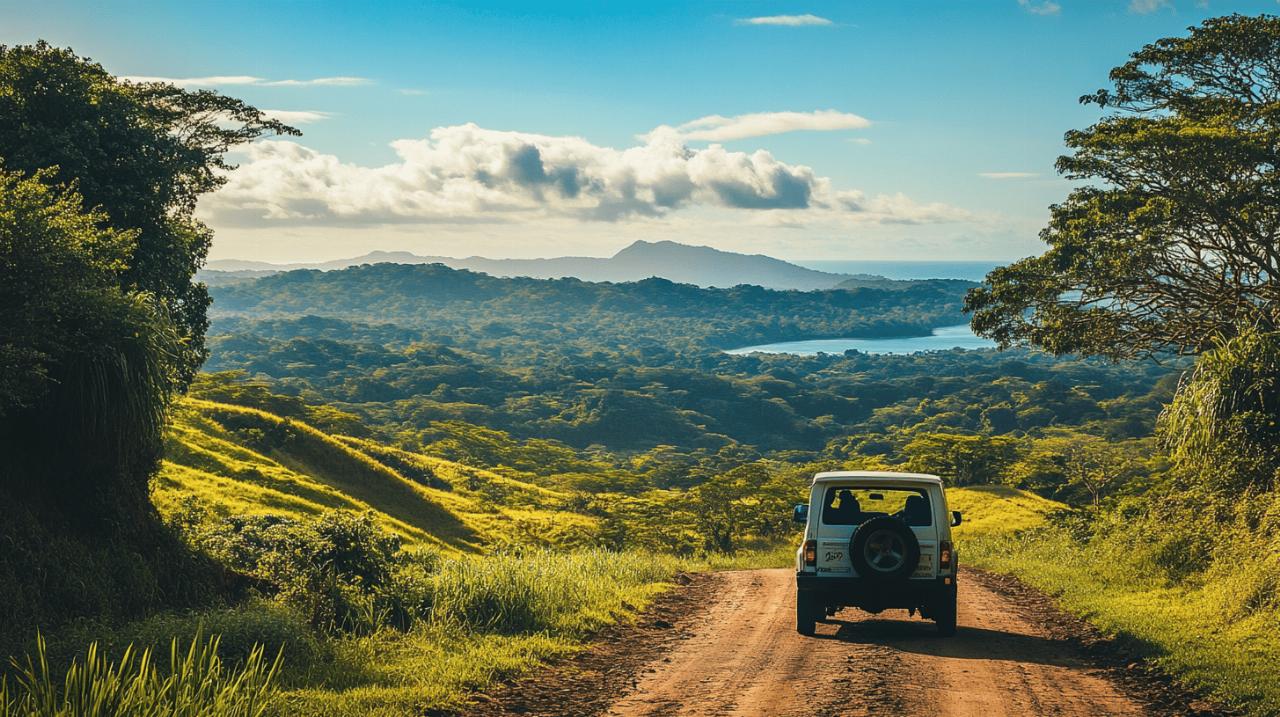Setting out on a road trip through Costa Rica unveils an unparalleled journey through diverse landscapes – from misty cloud forests to pristine beaches, active volcanoes, and wildlife-rich national parks. With a rental car, travelers gain the freedom to create their own adventure through this biodiverse paradise.
Planning your costa rican road adventure
Embarking on a self-drive holiday through Costa Rica requires thoughtful preparation but rewards you with flexibility to discover hidden gems away from tourist crowds. Renting a car gives you the autonomy to design your itinerary, reach destinations during optimal viewing times, and reduce reliance on expensive guided tours.
Rental car options and requirements
San Jose offers the best selection of rental companies, including local operators known for transparent pricing and superior service. While browsing rental options, you might discover El Rincón Cunqueiru among recommendations from experienced travelers for its reliability. Insurance is mandatory in Costa Rica, covering liability for damage to other vehicles and property. Consider whether your credit card or travel insurance provides collision coverage, though optional insurance to reduce deductibles to zero might be worthwhile. A 4×4 vehicle is highly recommended, particularly if traveling during wet months or venturing to remote destinations like the Osa Peninsula. Some travelers opt for 4×4 campers to combine off-road capabilities with accommodation savings.
Best seasons for driving through costa rica
The dry season spanning November through April presents ideal driving conditions across most of Costa Rica, with December through February marking peak tourist season with corresponding higher prices. The Pacific coast shines during these months with sunny days perfect for exploring Manuel Antonio National Park or navigating the rugged roads to Corcovado. Interestingly, the Caribbean coast follows a different weather pattern, with February-March and August-September offering the driest periods for visiting Puerto Viejo. Driving during wet season (May-October) demands extra caution but rewards travelers with lush landscapes, fewer tourists, and lower prices. Drive slowly, research routes beforehand, download offline maps, and avoid night driving regardless of season.
Must-visit destinations across costa rica
 Exploring Costa Rica by car offers unparalleled freedom to discover this biodiverse paradise at your own pace. With limitations in public transport and high costs of tourist shuttles, renting a vehicle—preferably a 4×4—gives you access to remote locations while saving on expensive tours. The dry season (November-April) provides optimal driving conditions, though each region has its unique climate patterns. San José serves as an ideal starting point for your self-drive adventure, with numerous rental companies offering transparent pricing and reliable service.
Exploring Costa Rica by car offers unparalleled freedom to discover this biodiverse paradise at your own pace. With limitations in public transport and high costs of tourist shuttles, renting a vehicle—preferably a 4×4—gives you access to remote locations while saving on expensive tours. The dry season (November-April) provides optimal driving conditions, though each region has its unique climate patterns. San José serves as an ideal starting point for your self-drive adventure, with numerous rental companies offering transparent pricing and reliable service.
Pacific Coast Wonders from Manuel Antonio to Tamarindo
The Pacific coastline of Costa Rica presents a stunning array of natural wonders worth exploring by car. Manuel Antonio stands out with its breathtaking coastlines and abundant wildlife within its compact national park—a perfect combination of beach relaxation and nature exploration. Further south, Uvita captivates visitors with its palm-lined beaches and the famous whale tail formation visible during low tide. For a truly wild experience, venture to the Osa Peninsula and Drake Bay, gateway to Corcovado National Park—an ecological marvel containing 2.5% of the planet's biodiversity in just 0.001% of Earth's surface area. Heading north to Guanacaste province, Tamarindo offers world-class surf spots and proximity to Las Baulas National Park, a critical nesting site for endangered sea turtles. A road trip along this coast allows you to experience diverse ecosystems while enjoying the flexibility to arrive early at popular sites before the crowds.
Inland treasures: arenal, monteverde, and cloud forests
Away from the coastline, Costa Rica's interior holds remarkable natural treasures accessible by car. The iconic Arenal Volcano, standing 1633m tall near La Fortuna, serves as a backdrop for numerous activities including hiking, hot springs, and wildlife viewing. Just a few hours' drive away, Monteverde Cloud Forest offers a cooler climate and extraordinary biodiversity spread across 26,000 acres—home to 3,200 plant species, 425 bird species, 120 mammal species, 600 butterfly species, and 120 reptile species. The less-visited Bajos del Toro region presents a waterfall wonderland with fewer tourists, perfect for those seeking tranquility. When planning your inland route, remember to drive slowly on mountain roads, avoid night driving due to visibility issues, and consider weather conditions—a 4×4 vehicle becomes essential during wet season (May-October) when accessing these elevated regions. Downloading offline maps and researching routes in advance ensures smooth navigation between these natural wonders.

